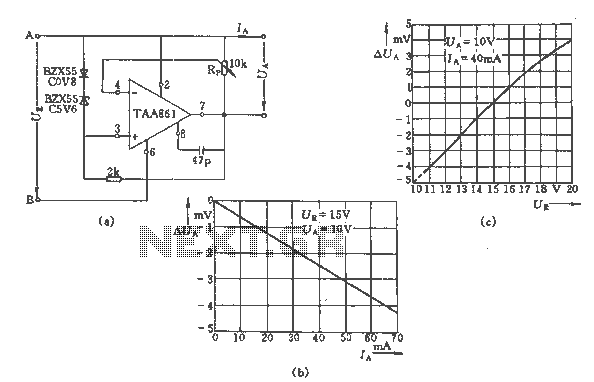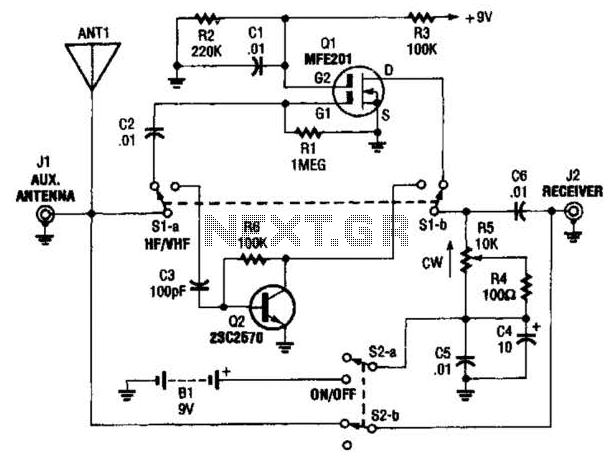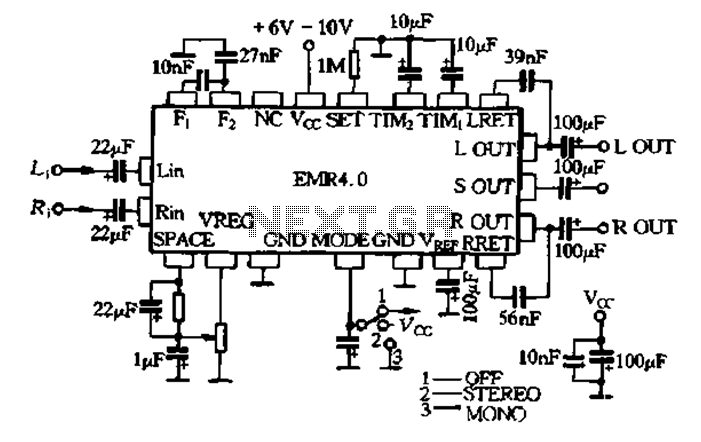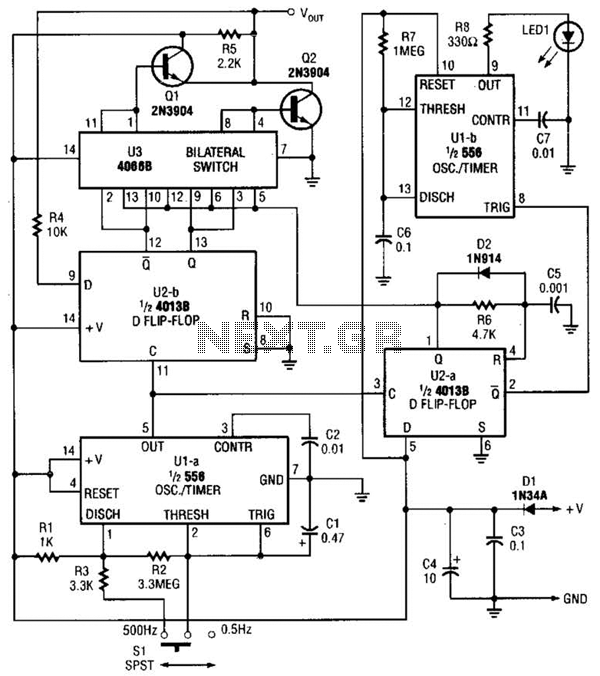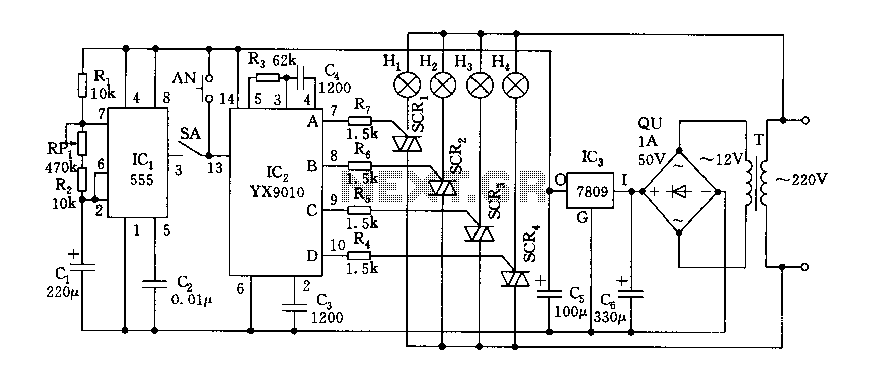
The logic circuit diagram composed of photocoupler
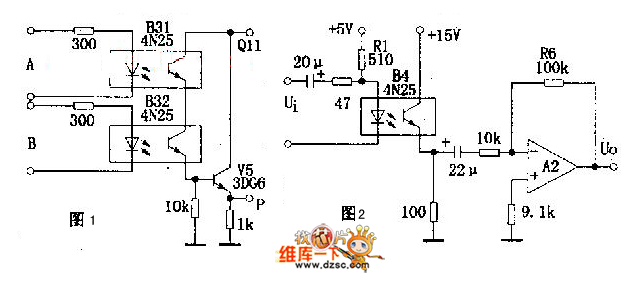
Figure 1 illustrates an AND gate logic circuit with the logic expression P=A. Figure B depicts two photodiodes connected in series. When the input logic levels A=1 and B=1, the output P=1. Similarly, this configuration can be used to form OR gates, NAND gates, NOR gates, and other logic circuits. Figure 2 presents a typical AC coupling amplifier circuit, which is suitable for selecting light signals.
The AND gate logic circuit, as represented in Figure 1, is a fundamental building block in digital electronics. The output P of the circuit is high (1) only when both inputs A and B are high (1). This behavior is crucial for applications where a specific condition must be met before an output is triggered. The use of photodiodes in Figure B enhances the versatility of the circuit, allowing it to respond to light signals. When both photodiodes are illuminated, they conduct, enabling the output to reach a high state. This configuration can be adapted to create various logic gates, such as OR, NAND, and NOR gates, which are essential for constructing complex digital systems.
Figure 2 showcases an AC coupling amplifier circuit, designed to amplify alternating current signals while blocking direct current components. This circuit typically consists of an operational amplifier (op-amp), resistors, and capacitors. The coupling capacitors allow AC signals to pass while preventing DC bias from affecting the subsequent stages of the circuit. The design is particularly useful in applications where it is necessary to isolate the AC signal from any DC offset, such as in audio processing or light signal detection. The amplifier's gain can be adjusted by selecting appropriate resistor values, providing flexibility in signal amplification according to the specific requirements of the application.Figure 1 is AND gate logic circuit. Its logic expression is P=A, Figure B has 2 photodiodes in series. When input logic level A=1, B=1, output P=1. In a similar way, itcan form Or gate, NAND gate, NOR gate and some other logic circuits. As shown in figure 2, it is a typical AC coupling amplifier circuit, which is suitable for selecting lightin.. 🔗 External reference
The AND gate logic circuit, as represented in Figure 1, is a fundamental building block in digital electronics. The output P of the circuit is high (1) only when both inputs A and B are high (1). This behavior is crucial for applications where a specific condition must be met before an output is triggered. The use of photodiodes in Figure B enhances the versatility of the circuit, allowing it to respond to light signals. When both photodiodes are illuminated, they conduct, enabling the output to reach a high state. This configuration can be adapted to create various logic gates, such as OR, NAND, and NOR gates, which are essential for constructing complex digital systems.
Figure 2 showcases an AC coupling amplifier circuit, designed to amplify alternating current signals while blocking direct current components. This circuit typically consists of an operational amplifier (op-amp), resistors, and capacitors. The coupling capacitors allow AC signals to pass while preventing DC bias from affecting the subsequent stages of the circuit. The design is particularly useful in applications where it is necessary to isolate the AC signal from any DC offset, such as in audio processing or light signal detection. The amplifier's gain can be adjusted by selecting appropriate resistor values, providing flexibility in signal amplification according to the specific requirements of the application.Figure 1 is AND gate logic circuit. Its logic expression is P=A, Figure B has 2 photodiodes in series. When input logic level A=1, B=1, output P=1. In a similar way, itcan form Or gate, NAND gate, NOR gate and some other logic circuits. As shown in figure 2, it is a typical AC coupling amplifier circuit, which is suitable for selecting lightin.. 🔗 External reference
